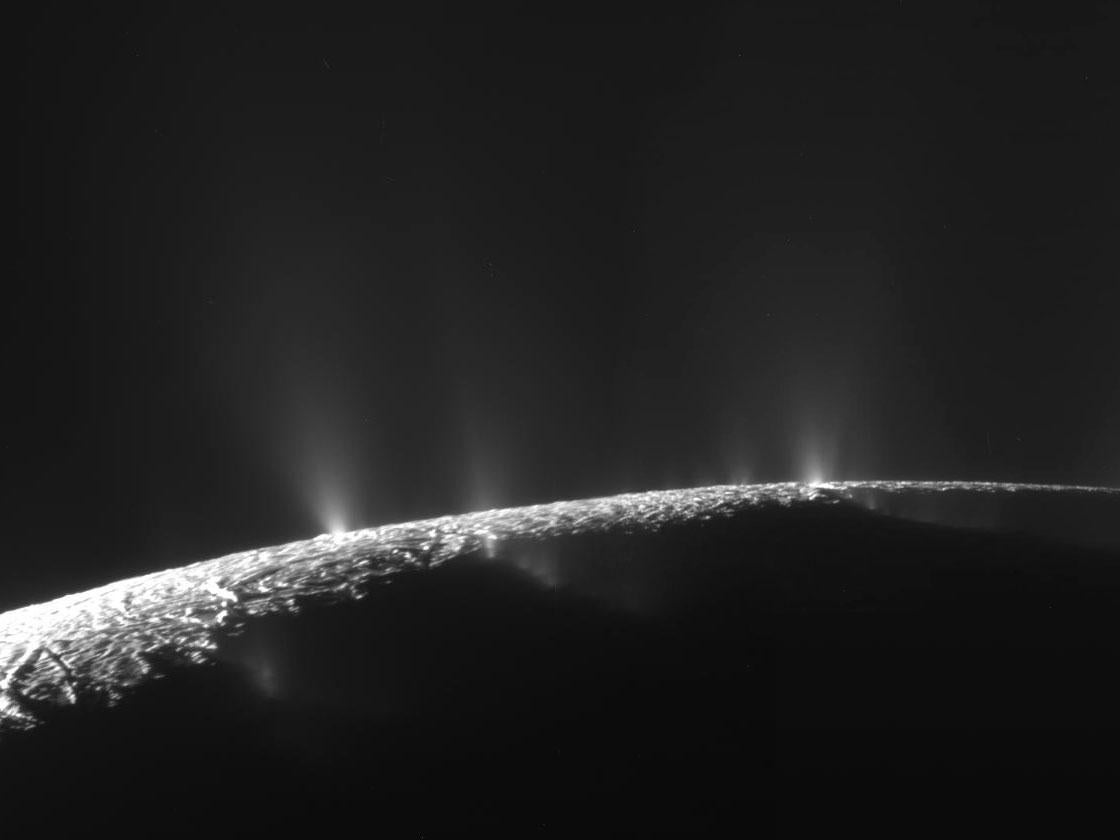Cassini Enceladus flyby: Saturn's moon to be examined for the 'ingredients of life' as spacecraft flys through huge spray of ice
Experts say the mission is an attempt to find out whether the moon could have 'the ingredients for life'

Your support helps us to tell the story
From reproductive rights to climate change to Big Tech, The Independent is on the ground when the story is developing. Whether it's investigating the financials of Elon Musk's pro-Trump PAC or producing our latest documentary, 'The A Word', which shines a light on the American women fighting for reproductive rights, we know how important it is to parse out the facts from the messaging.
At such a critical moment in US history, we need reporters on the ground. Your donation allows us to keep sending journalists to speak to both sides of the story.
The Independent is trusted by Americans across the entire political spectrum. And unlike many other quality news outlets, we choose not to lock Americans out of our reporting and analysis with paywalls. We believe quality journalism should be available to everyone, paid for by those who can afford it.
Your support makes all the difference.A spacecraft is to be sent through a fountain of icy spray that is coming out of an alien ocean that could have life within it.
The Cassini craft is to fly past Saturn’s moon Enceladus. And scientists hope that it can come to understand the makeup of the mysterious watery world, which some scientists think could have life beneath its surface.
Scientists have already confirmed that there is an ocean covering its entire globe, underneath its icy shell.
And this week the probe will fly through a geyser that is shooting out of the moon’s south polar region, about 30 miles above the surface.
During the approach, instruments on board the craft will sample the spray and analyse the cocktail of chemicals within it.
Higher plume encounters have been made before, but the low sweep will allow Cassini to access heavier molecules including organics.
Dr Curt Niebur, Cassini programme scientist at the American space agency Nasa's headquarters in Washington DC, said: "This incredible plunge through the Enceladus plume is an amazing opportunity for NASA and its international partners on the Cassini mission to ask, 'can an icy ocean world host the ingredients for life?"'
The plume is fed by icy geysers which blast 250 kilograms (551 pounds) of water vapour, ice grains and volatile chemicals into space at 1,360 mph and are thought to have a fiery origin deep beneath the moon's surface.
They have been compared with hydrothermal vents on Earth - volcanic fissures on the ocean floor where sea water percolating through fractures in the bedrock is heated to high temperatures.
The complex chemistry around hydrothermal vents gives rise to oases of teeming life in some of the deepest, coldest and darkest corners of the world's oceans.
One of Cassini's chief missions is to find evidence of hydrothermal activity on Enceladus.
Dr Hunter Waite, from Southwest Research Institute in San Antonio, Texas - who is team leader for the craft's neutral mass spectrometer instrument (INMS), said: "Confirmation of molecular hydrogen in the plume would be an independent line of evidence that hydrothermal activity is taking place in the Enceladus ocean, on the seafloor.
"The amount of hydrogen would reveal how much hydrothermal activity is going on."
The plume was first spotted by Cassini in 2005, a year after it arrived in the Saturnian system.
Around 100 geysers erupting from surface features known as "tiger stripes" were identified as its source.
The four 1.2-mile wide aligned cracks are believed to be sites of heightened volcanic activity on Enceladus.
Additional reporting by Press Association
Join our commenting forum
Join thought-provoking conversations, follow other Independent readers and see their replies
Comments